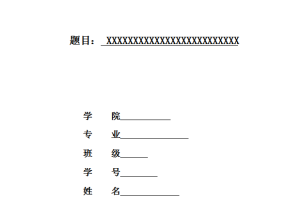企业社会责任信息披露研究——以温州一鸣食品股份有限公司为例
摘要:近年来,我国民营企业在履行社会责任问题上备受诟病。在当今激烈竞争环境下,优秀社会责任企业往往更容易获得社会的肯定和更多的发展空间。本文借助最新企业社会责任理论,对我国企业履行社会责任现状进行全面分析,并借助温州一鸣食品股份有限公司的实证调查,从政府、企业、社会三个维度对推进民营企业社会责任建设提出更具建设性、更富可操作性的对策建议。
关键词:民营企业;社会责任建设;一鸣公司
Abstract: In recent years, Chinese private enterprises have been much criticized when they fulfill their responsibilities. In today’s fiercely competitive environment, the outstanding social responsibility companies are often easier to obtain social recognition and more space for development. This article conducts a comprehensive analysis of the current situation that how our corporate fulfill social responsibility with the help of the latest corporate social responsibility theory and the empirical investigation of the Yiming, and to promoting the social responsibility of private enterprises constructive more workable suggestions from government, business, and social dimensions
Key Words: Private enterprises; Social responsibility; Building; Yiming Company
目 录
一、 引 言………………………………………………………… 4
二、 相关研究回顾…………………………………………………… 4
(一)国外企业社会责任研究…………………………………………. 4
(二)国内企业社会责任研究…………………………………………. 5
三、 我国民营企业社会责任建设的现状及存在问题………………………….. 6
(一)我国民营企业社会责任建设的现状………………………………… 6
(二)我国民营企业社会责任建设的存在问题…………………………….. 7
- 违法违规问题…………………………………………………. 7
- 劳工权益问题…………………………………………………. 7
- 商品质量问题…………………………………………………. 7
- 环境保护问题…………………………………………………. 8
四、温州一鸣食品股份有限公司…………………………………………. 8
(一)企业简介……………………………………………………. 8
(二)一鸣公司企业社会责任建设的情况………………………………… 8
- 经济责任…………………………………………………….. 8
- 法律责任…………………………………………………….. 9
- 伦理责任……………………………………………………. 10
- 慈善责任……………………………………………………. 11
(三)一鸣公司社会责任建设中存在的不足……………………………… 11
五、 我国民营企业社会责任建设的对策与建议…………………………….. 11
(一)发挥政府在推进民营企业社会责任建设的主导作用…………………… 11
1.制定和完善相关法律法规……………………………………….. 11
2.激励和引导企业履行社会责任……………………………………. 12
3.积极推进企业社会责任国际标准实施………………………………. 12
(二)确立民营企业推进自身社会责任建设的主体作用…………………….. 12
1.增强企业的经济实力为履行社会责任奠定基础……………………….. 12
2.树立社会责任导向的经营理念……………………………………. 12
3.建立履行社会责任的制度……………………………………….. 13
(三)发挥社会公众对民营企业社会责任建设的推进作用…………………… 13
1.NGOs推动…………………………………………………… 13
2.新闻舆论等媒体推动…………………………………………… 13
3.消费者推动………………………………………………….. 13
六、 结 论……………………………………………………….. 14
参考文献………………………………………………………….. 16





